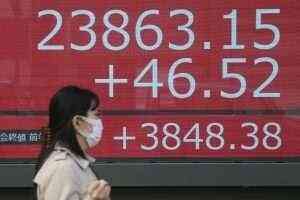
It is vital to compare the ratios between companies operating in the same industry and not for companies operating in different industries. Then, to calculate the inventory turnover ratio, take the cost of goods sold and divide it by the average inventory. Depending on your business, that inventory might be final products like pottery or linens, or raw materials like lumber or wool. Either way, you don’t receive revenue until you turn over, or sell, those goods.
You can use inventory management software to calculate and track your inventory turnover ratio more easily. This also makes it easier to track trends across key accounting periods. Calculating inventory turnover ratio helps you make business decisions about pricing, purchasing, marketing, and more.
Promotions management: Time for a fresh approach?
As a result, a favorable overall inventory ratio does not mean that you are free and clear of excess parts and obsolescence. To find the average inventory for the year, you’d add together all four of these figures and divide by 4. Optimize the receipt, stock, pick and shipment of products with barcoding.
That means that you turn over your inventory every 91.25 days (365 / 4). To determine how frequently your inventory turns, in terms of days, divide 365 days by the result of your inventory turnover ratio calculation. To determine your inventory turnover, you need to divide your cost of goods sold (COGS) during the year by the average inventory value during the year.
How to Calculate Inventory Turnover
Some computer programs measure the stock turns of an item using the actual number sold. Multiple data points, for example, the average of the monthly averages, will provide a much more representative turn figure. This showed that Walmart turned over its inventory every 42 days on average during the year. We write regular articles that help drivers and businesses become better at all things delivery. Improving your stock turn’s made all the easier with a clear picture of future demand. And knowing which items you need to invest in is the only way to do that.
Many tools enable this, and some even help you automate reordering inventory altogether. Before you make drastic decisions regarding your inventory, analyze your marketing to ensure that your messaging, visuals, and navigation are on point (on both desktop and mobile). Determine if demand is there — and if you’re capturing it correctly. If you’re not tracking inventory turnover, it’s tempting to keep reordering the same SKUs in the same amounts over and over again.
First, you need to balance your inventory levels.
If you are looking for a 3PL that will help you manage your inventory in real time, check out ShipBob. With ShipBob’s technology combined with global fulfillment, you can gain a holistic view of your operations with just a few clicks. SKU rationalization is the process of identifying whether a product on the SKU level should be discontinued due to declining sales and overall profitability. For a lot of brands, 3 SKUs make up 50% of sales (or in some cases, the top 2 best-sellers are 90% of revenue). An ideal SKU count can vary for each vertical and business, but pumping out too many SKUs too fast can impact your financials.
Revolutionising Apparel Sourcing: How Technology is Reshaping the Fashion Supply Chain – Fibre2fashion.com
Revolutionising Apparel Sourcing: How Technology is Reshaping the Fashion Supply Chain.
Posted: Mon, 04 Sep 2023 11:56:59 GMT [source]
Two things allow you to figure out how to calculate inventory turnover ratio. If you don’t, here’s how to calculate COGS and how to calculate ending inventory. Example – You have a COGS of $4 million and an average inventory cost of $1 million.
Turnover Days in Financial Modeling
Maybe you need to stock different products or keep a smaller quantity on hand. Whether goods are perishable, seasonal, or highly vulnerable to changing trends, excess stock can easily become a burden to your cash flow, if not carefully handled. An overabundance of low-demand (or no-demand) goods means money down the drain. It’s super-important to calculate your inventory turnover ratio in order to avoid this situation developing. With a well-balanced supply-and-demand chain, your business should be able to stay in the clear. Inventory turnover can also vary during the year if a business is locked into a seasonal sales cycle.

Excess inventory (overstocking) is the enemy of profit and efficiency. If you bulk-buy too many items, your inventory turnover ratio is going to suffer. With all the capital tied up in bulk inventory, it could take a very long time to get that money back. In general, it’s better for retailers to reduce their carrying costs by resisting the urge to buy in bulk, even where there are economies of scale or discounts to be had. If those products aren’t going to shift, those potential savings from the manufacturer could be meaningless.
Days Sales of Inventory
However, 5 parts account for 40% of the sales but only 10% of the average inventory cost. This would mean that your inventory turnover for these specific parts would be 16 (($4 million x 40%) / ($1 million x 10%)) and that these parts turn every 22.81 days. Finale Inventory is an inventory management solution that offers many tools to help you end of year bookkeeping understand and improve your stock turnover ratio. Our dynamic reorder point calculations have helped many retailers keep a leaner inventory on a tighter replenishment schedule. Regularly review your product portfolio to determine your best-selling items. If you can, work out supplier discounts for products you know will have continued demand.
- The best way to determine a “good” inventory turnover ratio for your business is to start tracking it.
- To do so, ensure you do regular inventory counts and reconciliations on all of your inventory.
- Maybe you need to stock different products or keep a smaller quantity on hand.
- But again, this additional investment in stock will have a huge impact on your stock turn ratio.
- As the example indicates, marketing is an especially useful tool for eliminating slow-moving inventory.
- Similarly, accounts payable turnover (sales divided by average payables) is a short-term liquidity measure that measures the rate at which a company pays back its suppliers and vendors.
Take your learning and productivity to the next level with our Premium Templates. Access and download collection of free Templates to help power your productivity and performance.
The most common of which is that the inventory turnover ratio is calculating the average turnover of ALL your parts. While your inventory turnover ratio can offer a number of insights into your ability to sell parts quickly and to fulfill customer’s orders, it does have some qualifiers. You inventory turnover ratio shows how many time your parts are https://online-accounting.net/ sold or replaced over time. The basic formula for COGS starts with the cost of inventory at the beginning of the year, adds in purchases and other costs, and subtracts the inventory value at the end of the year. Your total cost of stock purchased plus warehousing costs was $7,000. Your COGS is $20,000 plus $7,000, minus $18,000, which equals $9,000.
The inventory turnover rate measures how quickly you are moving inventory through your warehouse. Combined with other measurements such as customer service level and return on investment, inventory turnover can provide an accurate barometer of your success. Your inventory turnover metrics can tell you a lot about your inventory management process and help you make some important strategic decisions. Either sales are down, or items are overstocked — and these concerns often overlap. If you see a low ratio, you might solve it by boosting your marketing efforts or changing your inventory.